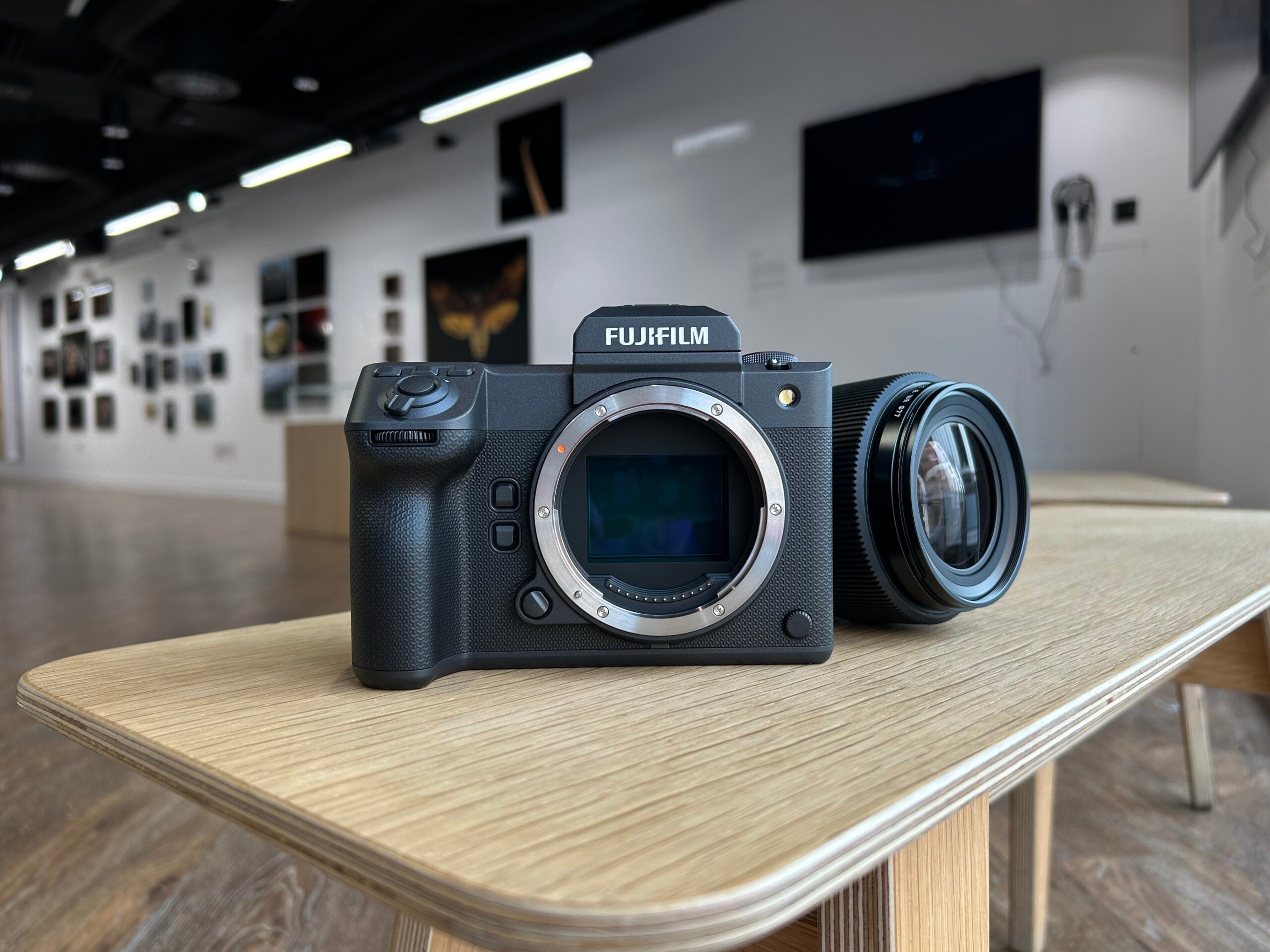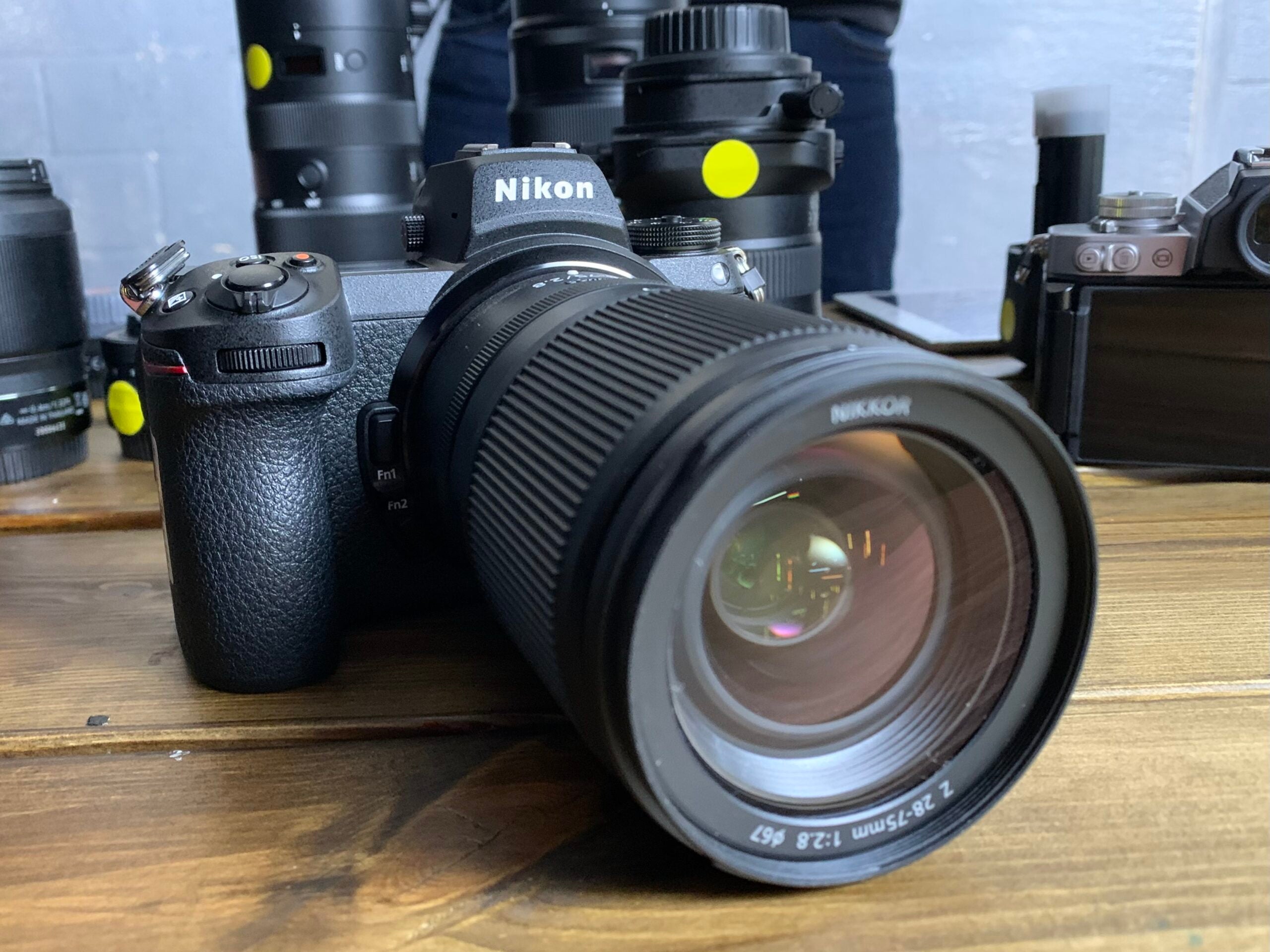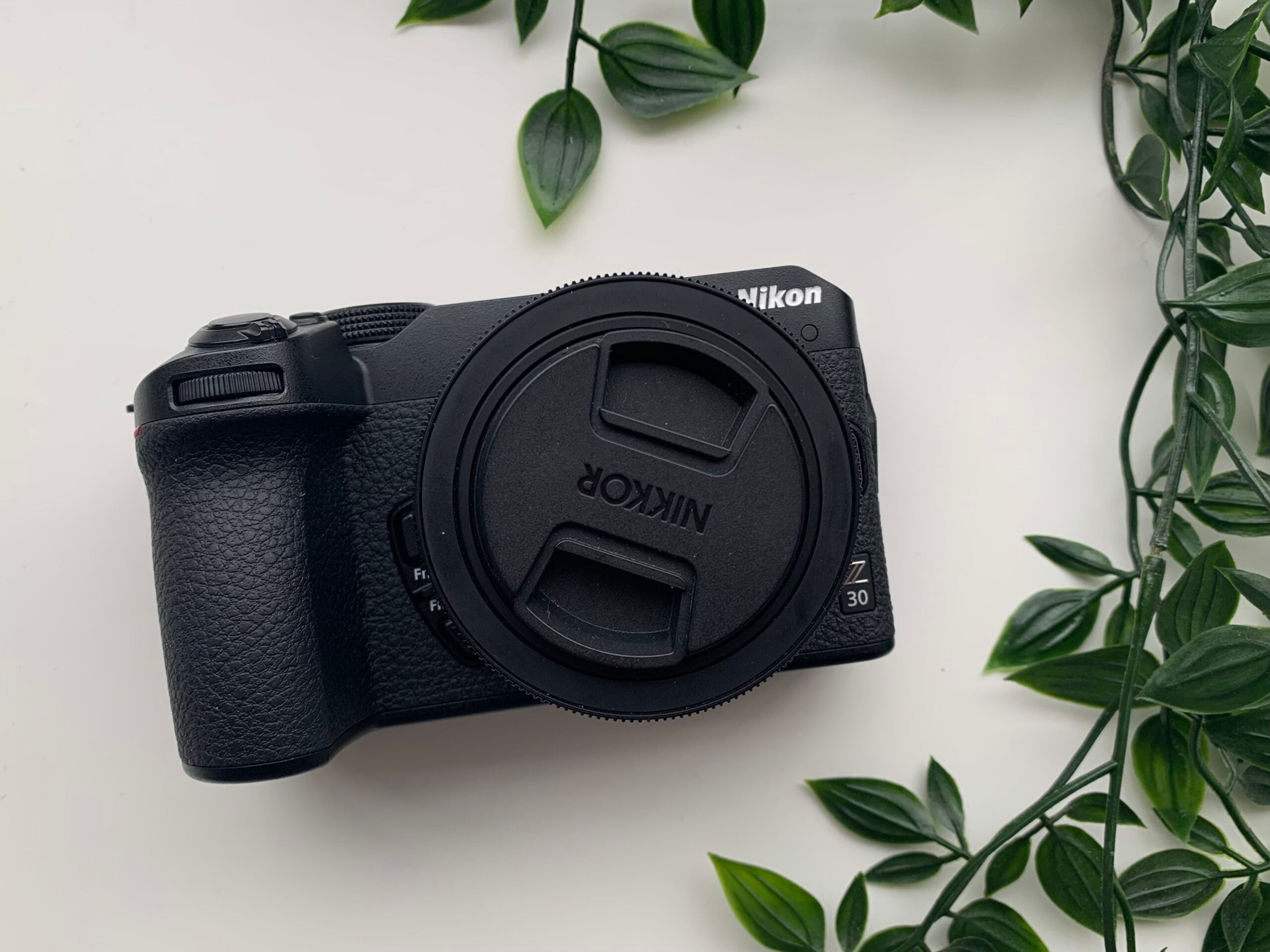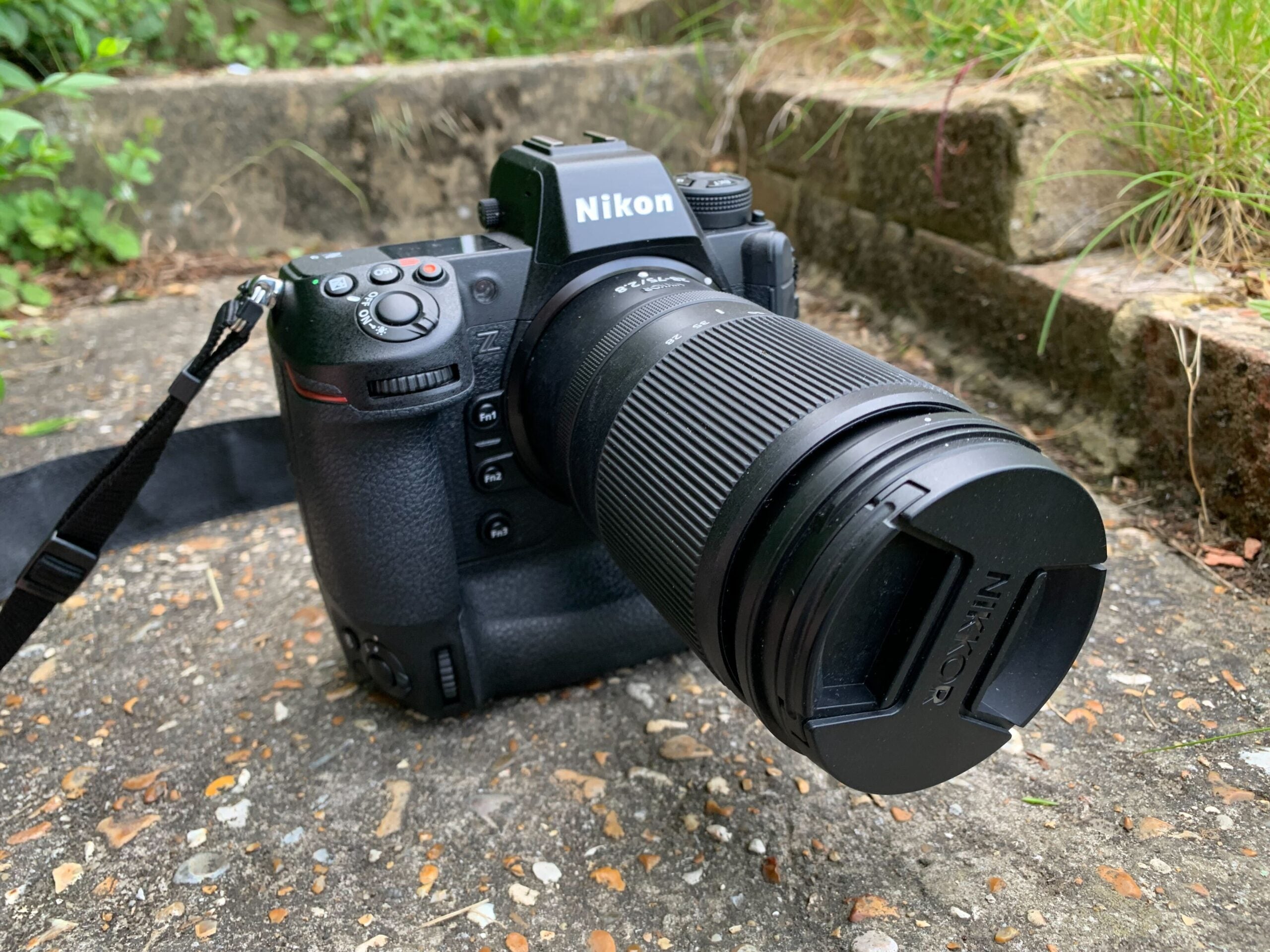Fujifilm X-H2S Review
The X-H2S is Fujifilm's fastest (and priciest) X series camera yet.
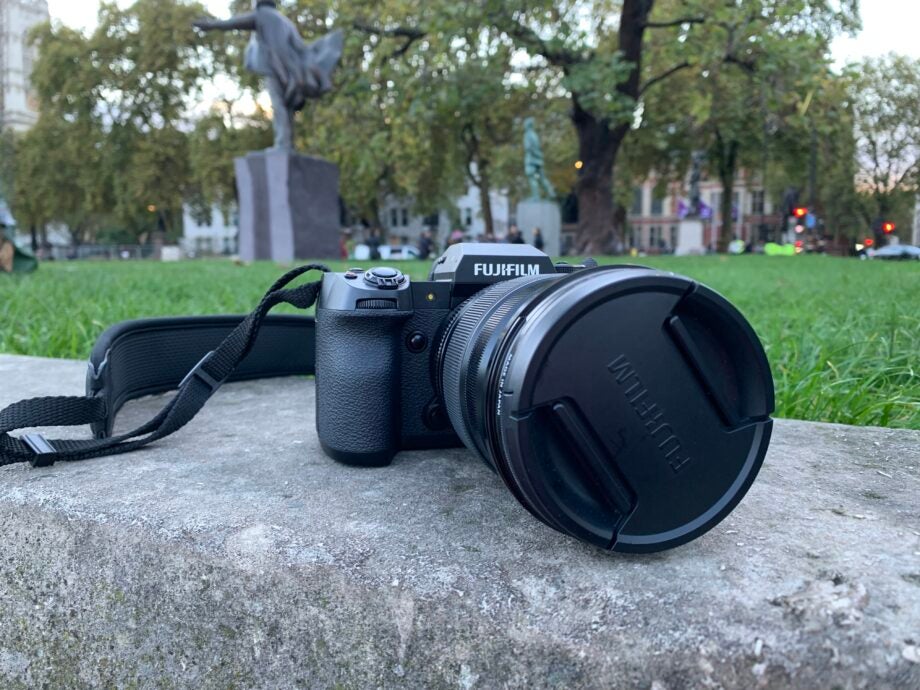

Verdict
The Fujifilm X-H2S is a versatile camera with a speedy burst mode, an updated subject detection algorithm and support for 6.2K video. However, it’s not as high-resolution as the X-H2 nor as visually appealing as the X-T5, both of which are cheaper.
Pros
- Impressive 40fps burst mode
- Quick and accurate subject detection
- Support for 6.2K video at 30p or 4K at 120p
Cons
- Expensive for an APS-C camera and pricier than the X-H2
- HEIF file format isn’t universally supported
- Design has less character than the X-T5
Availability
- UKRRP: £2499
Key Features
- X-Trans CMOS 5 HSStacked 26.16-megapixel image sensor
- X-Processor 5Offers faster performance with lower power consumption
- Up to 40fps burst modeAlong with new subject-recognition AF
- 6.2K/30p videoWith support for Apple ProRes
Introduction
The X-H2S is one of two X-H cameras released by Fujifilm in 2022 alongside the X-H2.
The two cameras sit at the top of Fuji’s X series line-up as hybrid models, with the X-T5 having taken the X-T line in a more photo-first direction when it was announced at the end of last year.
While the X-H2 and the X-H2S are virtually identical in design, there are a number of differences when it comes to their specs and feature offerings, with the X-H2S placing more of a focus on speed compared to the high-resolution X-H2.
The X-H2S was also the first Fujifilm camera to pack the X-Trans CMOS 5 HS image sensor and the X-Processor 5, with the latter now available in the X-H2 and the X-T5 too.
So, how successful is Fujifilm’s latest foray into the high-speed camera market?
Design
- The X-H2S has a small and lightweight body, though large lenses will add more weight
- It has a 3-inch vari-angle display, an OLED EVF and a monochrome LCD monitor
- It holds up well in the rain
The X-H2S is a relatively small and lightweight mirrorless camera with dimensions of 136.3 x 84.6 x 92.9mm and a weight of 660g. However, the lens you choose can make the camera quite a bit heavier and less travel-friendly, which was the case for me as I paired it with the Fujinon XF 16-55mm zoom lens.
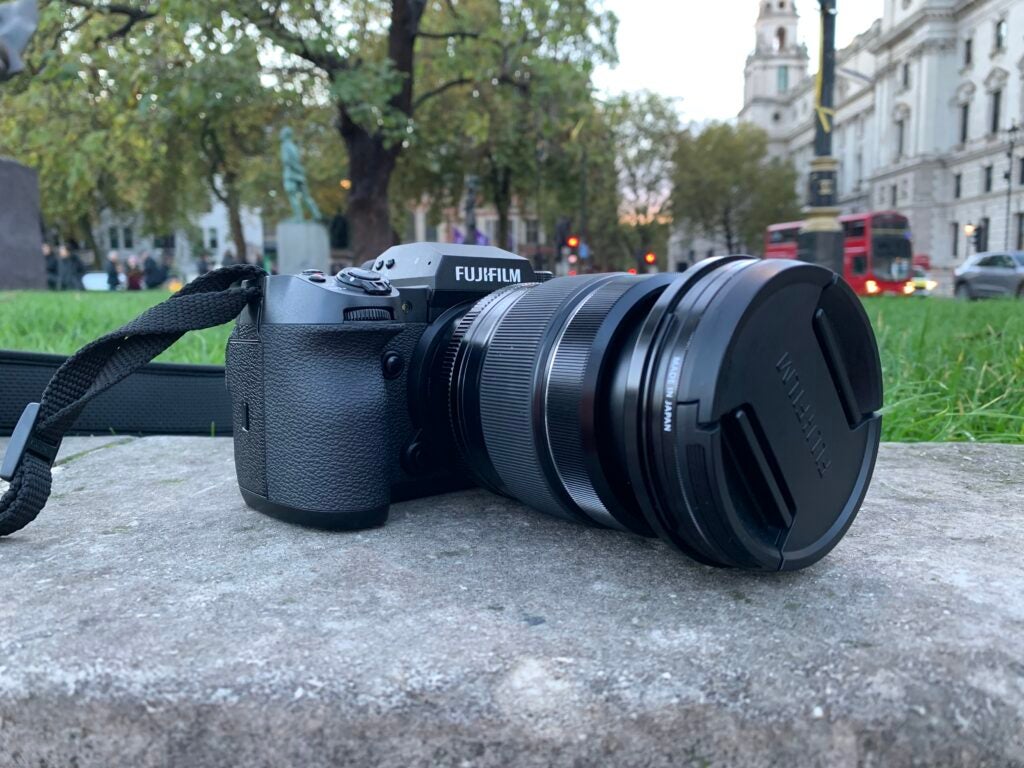
The camera isn’t world’s away from the size of the X-T5, but the X-H2S is chunkier and it has a deeper grip which does well to support larger lenses.
Nevertheless, I found the X-H2S to be significantly smaller and more lightweight than some other hybrids, like our best mirrorless camera, the Nikon Z9.
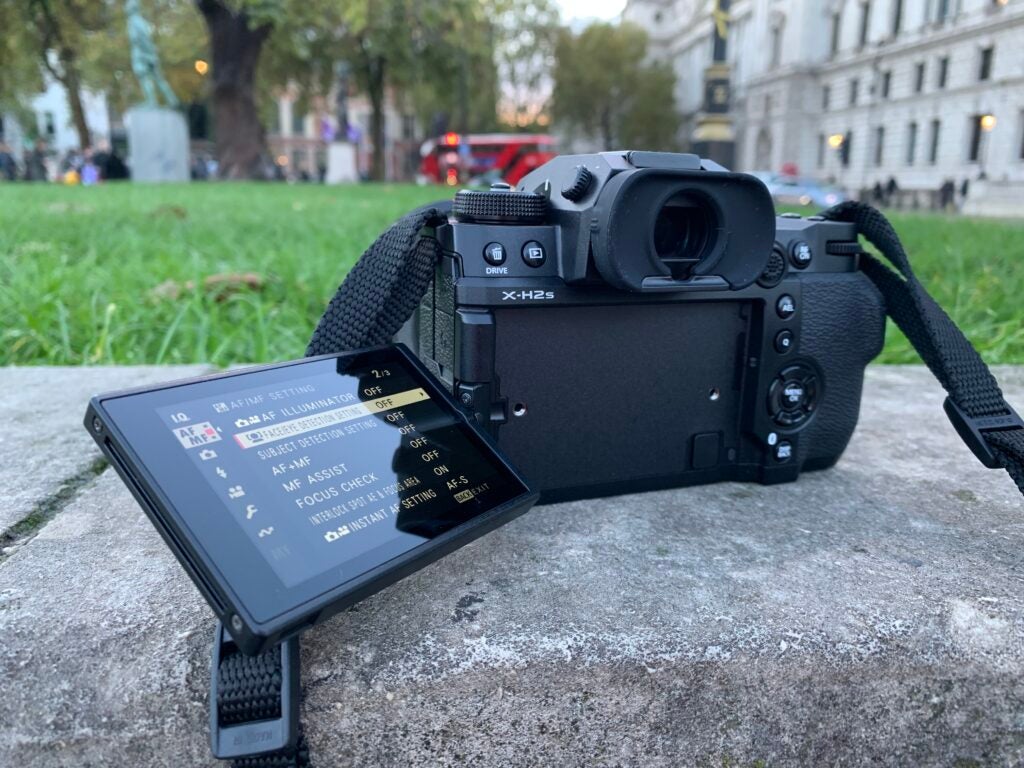
The Fujifilm has a bright 3-inch LCD touchscreen with a 1.62-million dot resolution. It also has a vari-angle design that allows you to rotate and tilt the screen to snap selfies and shoot at challenging angles, which I always appreciate.
It also has a 0.5-inch, 5.76-million dot OLED EVF with 0.8x magnification and a 120fps frame rate, along with a 1.28-inch black and white LCD monitor on the top which allows you to see settings at a glance.
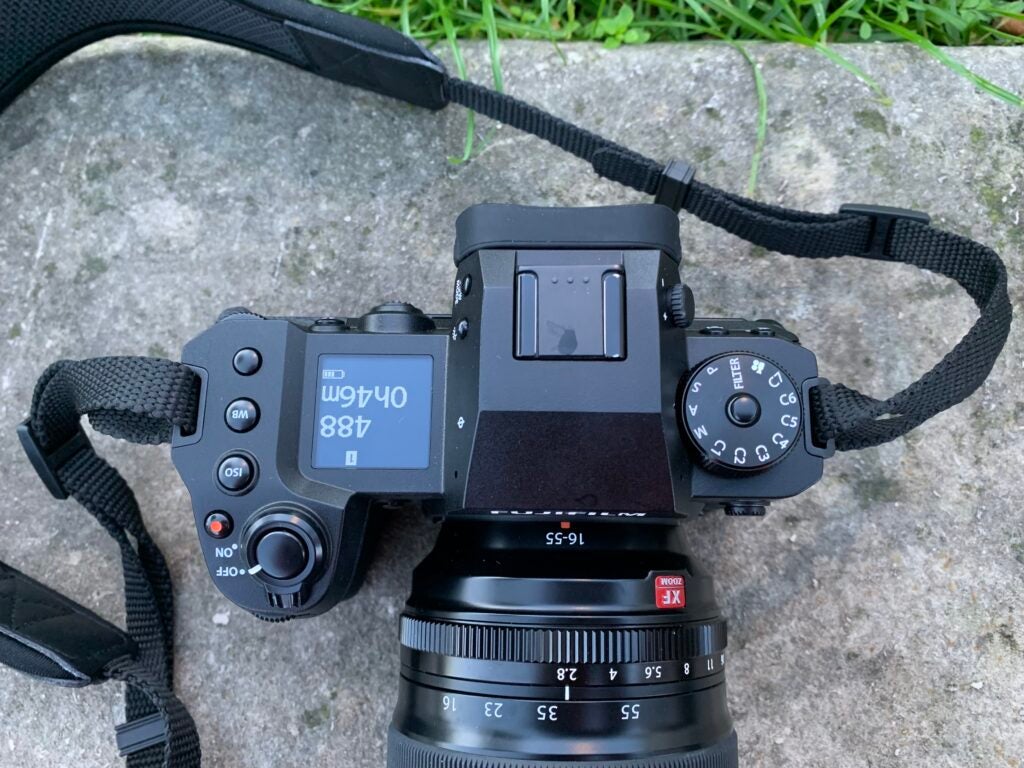
The latter isn’t available on the X-T5, which packs a similar array of physical buttons on its rear, but more retro dials on top where the X-H2S’s monochrome monitor lives. This includes an exposure compensation dial not found on the X-H2S.
The controls on the X-H2S are more durable than those on the X-T4 and I found the weatherproof design held up well under a sudden bout of heavy rain that happened to pour down when I first took the camera out for a spin.
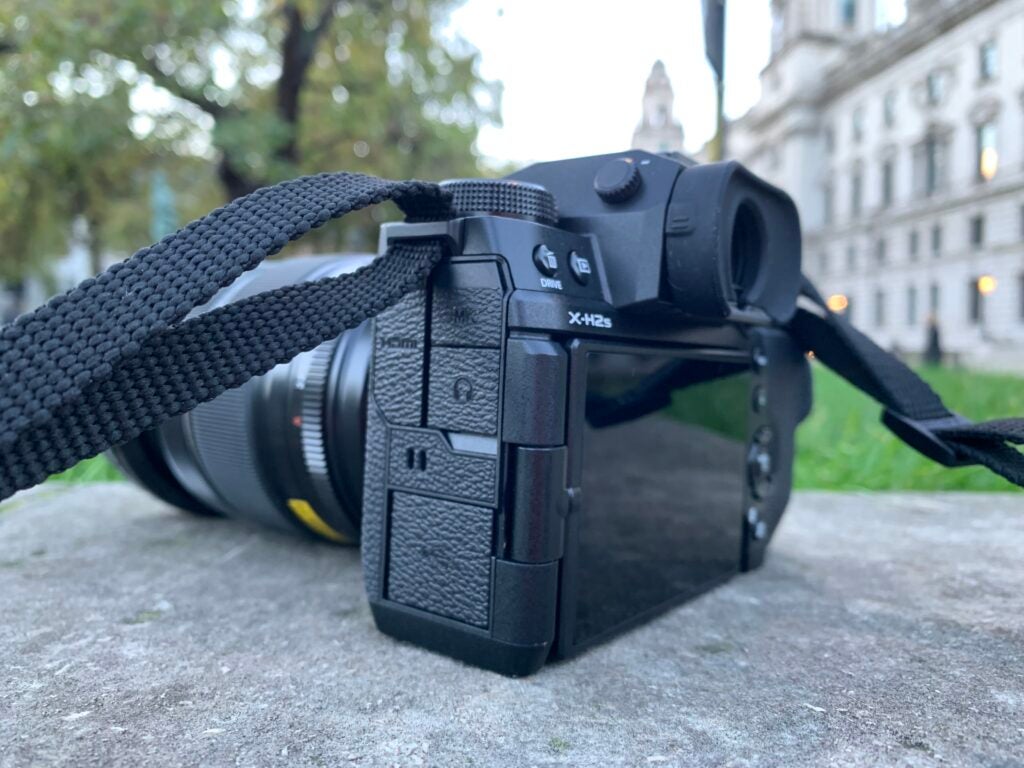
Ports include HDMI Type-A, USB Type-C and a 3.5mm headphone and microphone jack. There are also two memory card slots to support both CFexpress Type B and UHS-II SD, though you’ll want to opt for CFexpress to take full advantage of this camera’s speed.
Features
- The X-H2S is powered by a new processor and image sensor combo
- It takes advantage of a 40fps burst mode
- The new AF algorithm can detect multiple forms of transport
As mentioned at the beginning of this review, the X-H2S marks the first Fujifilm camera to be powered by the X-Processor 5 and the only one to include the new X-Trans CMOS 5 HS image sensor.
Fujifilm claims the X-Processor 5 improves image quality, reduces power consumption and speeds up performance compared to the X-Processor 4 found in cameras like the X-T4.
Meanwhile, the X-Trans CMOS 5 HS is a stacked 26.16-megapixel APS-C sensor that is not only faster than its predecessor, the CMOS 4, but also supports a 40fps blackout-free burst mode with the HS in its name standing for “high speed”.
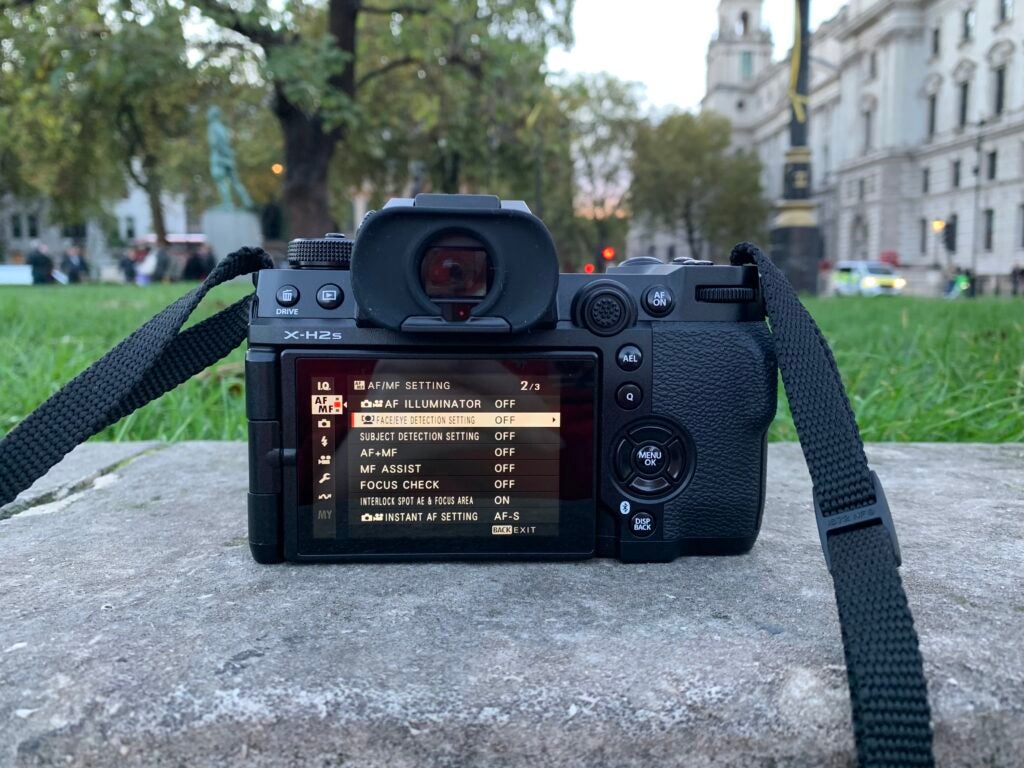
That 40fps spec is possible when continuously shooting through the electronic shutter, while the mechanical shutter sticks with a (still quite fast) 15fps. This feature makes the X-H2S Fujifilm’s fastest X series camera yet.
Not only that, but the autofocus is 3x faster than that on the X-T4 and has seen improvements when it comes to tracking moving subjects. The camera takes advantage of 425 focus points, as well as a new subject detection autofocus algorithm trained to detect cars, motorcycles, planes and trains, along with people and animals.
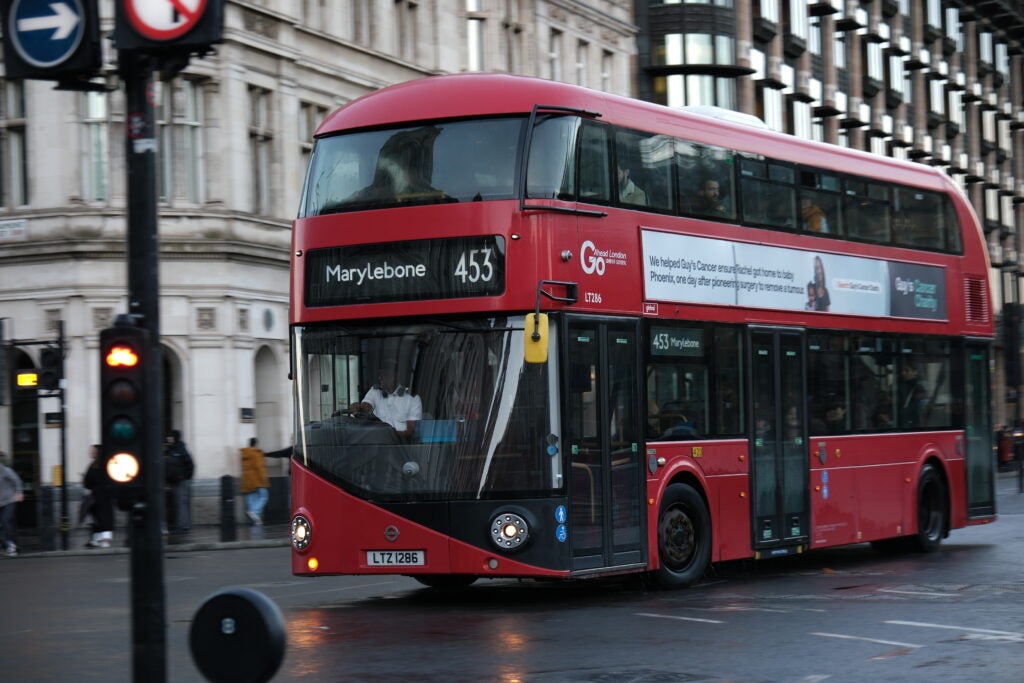
I found that the AF did a great job of latching on to people and cars alike as they walked (or sped) through the frame. I also tested the camera on buses and motorcycles and noted similar results.
The camera has an ISO sensitivity range of 160-12800, with an extended range of 80-51200, along with 5-axis in-body image stabilisation with 7 stops of compensation, with the latter the same found in both the X-H2 and the X-T5.
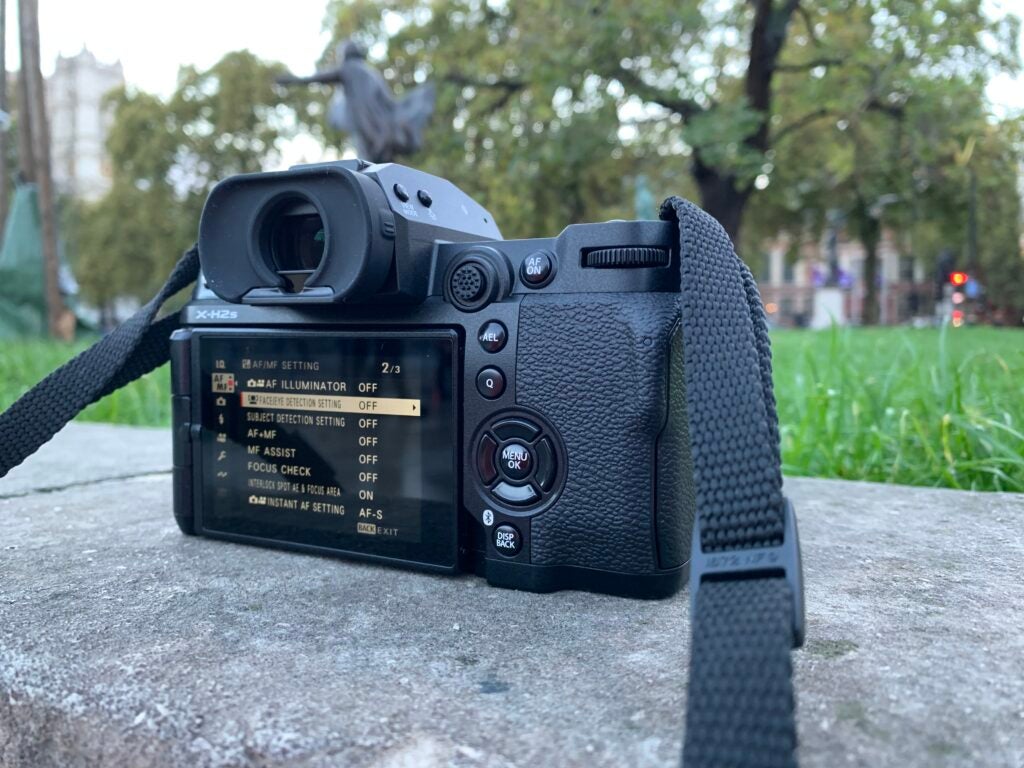
One important factor to note here is that the X-H2S shoots in the HEIF format to save space. This means that you might need to install a program to view and convert files if your device or editing software doesn’t support the format. Thankfully, I didn’t encounter any problems here, but it’s something worth keeping in mind before you shop.
The X-H2S is powered by an NP-W235 Li-on battery, which I found easily lasted a full day walking around central London on a single charge.
Image and video quality
- The camera can capture 26-megapixel images
- Photos are sharp and vibrant
- There’s support for 6.2K/30p video, as well as 4K/120p
While the X-H2S isn’t able to capture the 40 to 160-megapixel shots possible with the X-H2 and its Pixel Shift Multi-Shot feature, I still found the 26-megapixel photos snapped with the camera to be plenty bright and sharp.
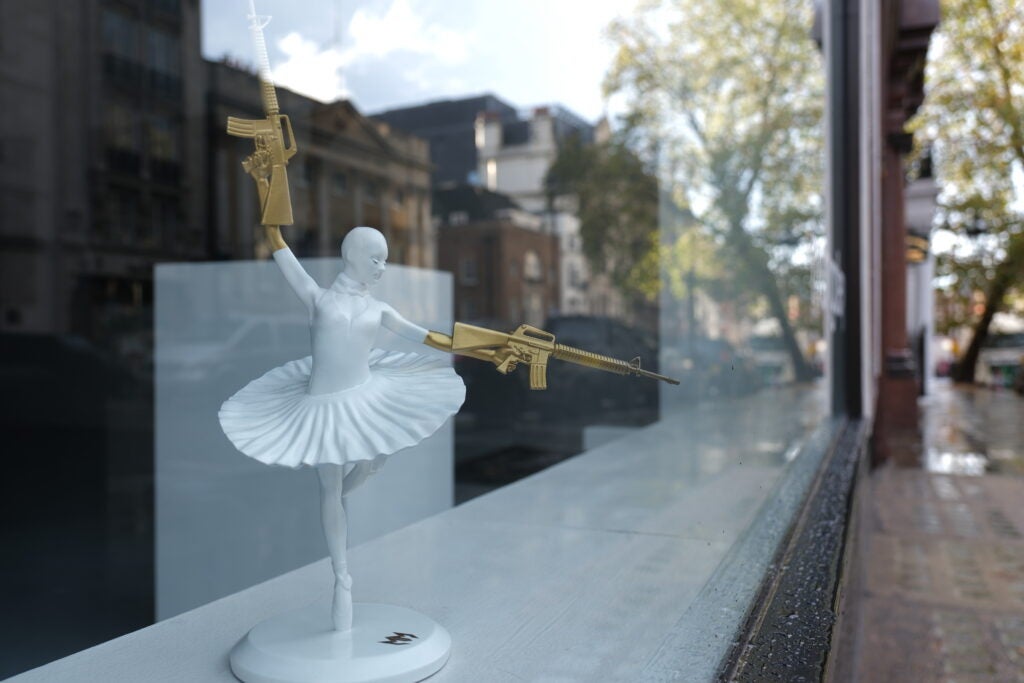
The photos are high-resolution enough that I can see them satisfying any hobbyist and most professional photographers, and the colours are punchy and saturated, with red and green tones appearing especially vibrant.
Of course, there are also Fujifilm’s film simulation modes for those wanting to recreate a specific look or feel, with a large range of stylistic looks to choose from.

The autofocus is quick and precise when it comes to tracking moving subjects like people and animals, and the transport options make it easier to shoot faster subjects, like cars.
For those in need of more pixels, the X-H2 has the more high-resolution sensor but it doesn’t benefit from the high-speed skills the X-H2S does, meaning that’s a compromise you’ll need to be willing to make if you opt for the cheaper camera.

The X-H2S is also capable of recording 6.2K video at up to 30K and 4K at up to 120p, meaning you can capture sharp footage for slow-motion video.
The 6K support makes the camera feel future-proofed when it comes to video, while support for Apple ProRes 422 HQ is a handy addition.
Latest deals
Should you buy it?
You want a speedy and lightweight camera: The X-H2S is fast and capable but still small and lightweight enough to carry around comfortably.
You don’t see yourself using the burst mode: The X-H2 has the same physical design and a higher-resolution sensor for less.
Final Thoughts
The X-H2S is a fantastic all-rounder from Fujifilm.
Its hybrid design makes it more versatile than the X-T5 – especially when it comes to high-speed shooting and video – though it doesn’t quite carry the same trademark retro appeal that the X-T series has become known for.
If you have no need for a 40fps burst mode and don’t mind sacrificing a bit of battery life, you might want to consider the X-H2 instead. The camera has a higher-resolution sensor, 8K video support and is $500/£600 more affordable sitting just below the $2000/£1900 mark.
I’d also recommend looking at the Sony Alpha 7 IV. The Sony camera is another all-rounder but with a full-frame sensor rather than an APS-C for just a couple hundred pounds more.
How we test
We test every camera we review thoroughly. We use set tests to compare features properly and we use it as our main device over the review period. We’ll always tell you what we find and we never, ever, accept money to review a product.
Tested for at least a week
Experimented with different modes and settings
Tested the camera’s video recording capabilities
FAQs
No, the X-H2S has an APS-C sensor.
The camera has a stacked 26.16-megapixel image sensor.
Yes, the X-H2S supports 4K video capture at 120p, as well as 6.2K video at 30p.


